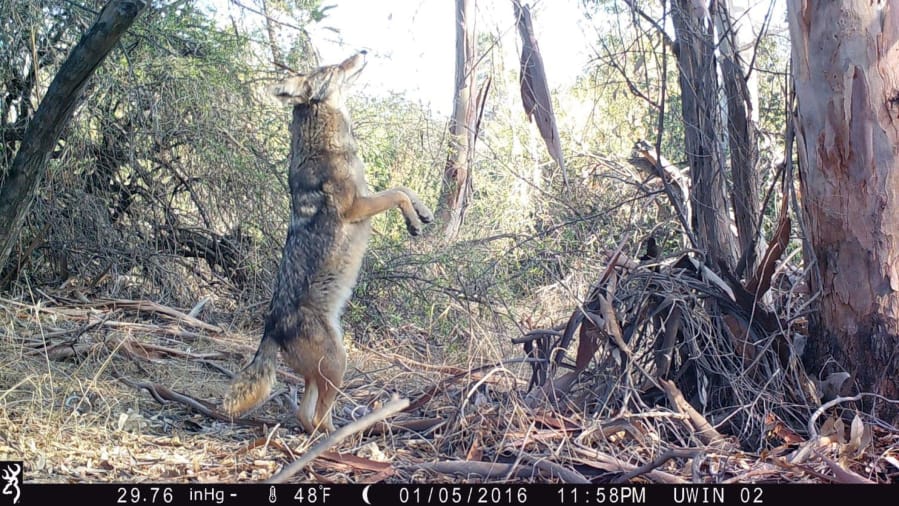For eons, coyotes roamed what is now the Western United States, with its wide-open plains. Then came European settlers, who cut down forests for farms and ranches in a steady east-west march. Along the way, they killed large predators such as pumas and wolves to protect livestock and for their own safety.
The predators they obliterated were mortal enemies of the coyote, holding them in check, a new study in the journal ZooKeys says. As mountain lions and wolf packs disappeared from the landscape, coyotes took advantage, starting a wide expansion eastward at the turn of the last century into deforested land that continues today.
Coyotes are newly established in every state, several Canadian provinces and are rapidly moving south of Mexico into Central America, the study released Tuesday says. They’ve even been spotted by camera traps in Panama. They are in Washington, D.C.’s Rock Creek Park and New York’s Central Park, and they have been known to attack household pets and, on very rare occasions, people. Their rapid expansion into North Carolina in the past decade is a major reason a program to rehabilitate critically endangered red wolves there is on the brink of failure.
Coyotes are animals federal wildlife managers and state game officials love to hate, marshaling armies of hunters wielding guns, poison and leg traps to kill them. But the current study adds to evidence that people unleashed coyotes with programs that wiped out their bigger, stronger competitors.
“The north extension into Canada and northeast moved faster than the southern one,” said Roland Kays, a research associate professor at North Carolina State University and the North Carolina Museum of Natural Sciences, both in Raleigh, an author of the paper. “It goes down through Mexico. It’s all open country for the most part.”
Coyotes have been around forever. Today’s species originated from ancestors that lived alongside saber-tooth tigers, mastodons and dire wolves.
Kays and James Hody, a North Carolina State graduate student during the research, mapped the historic range of coyotes using archaeological and fossil records. Then they plotted their range expansion across North America from 1900 to 2016 using museum specimens, peer-reviewed reports and game department records. Over the course of the study, the authors reviewed more than 12,500 records covering 10,000 years.
For reasons biologists don’t quite understand, coyotes prefer open land over forest. It could be that bigger predators that kill them over territory and competition for food could better sneak up on them in forests, Kays theorized. But now, cameras have caught coyotes in forests where the apex predators have largely been removed, opening the prospect that coyotes could continue to move into territories where they’ve never been, such as into South America.
Unlike mountain lions, wolves and bears, that were hunted to near-extinction in state-sponsored predator control programs, coyotes don’t give in easily, Kays said. “Coyotes are the ultimate American survivor. They have endured persecution all over the place. They are sneaky enough. They eat whatever they can find — insects, smaller mammals, garbage,” he said.
Stanley Gehrt, an Ohio State University professor and wildlife ecologist who runs the Urban Coyote Research Project, which studies coyotes in the Chicago area, said coyotes “are extremely flexible and adaptable to different kinds of environments … they’re generalists for sure, so generalists tend to do pretty well in cities, but they also benefit once they move into cities.
“Their primary source of mortality in rural areas is now removed, and that was people. You might wonder: How can that be removed? That’s because you don’t have hunting and trapping occurring in the cities. The cities actually act as a kind of refuge for coyotes once they get established.”



